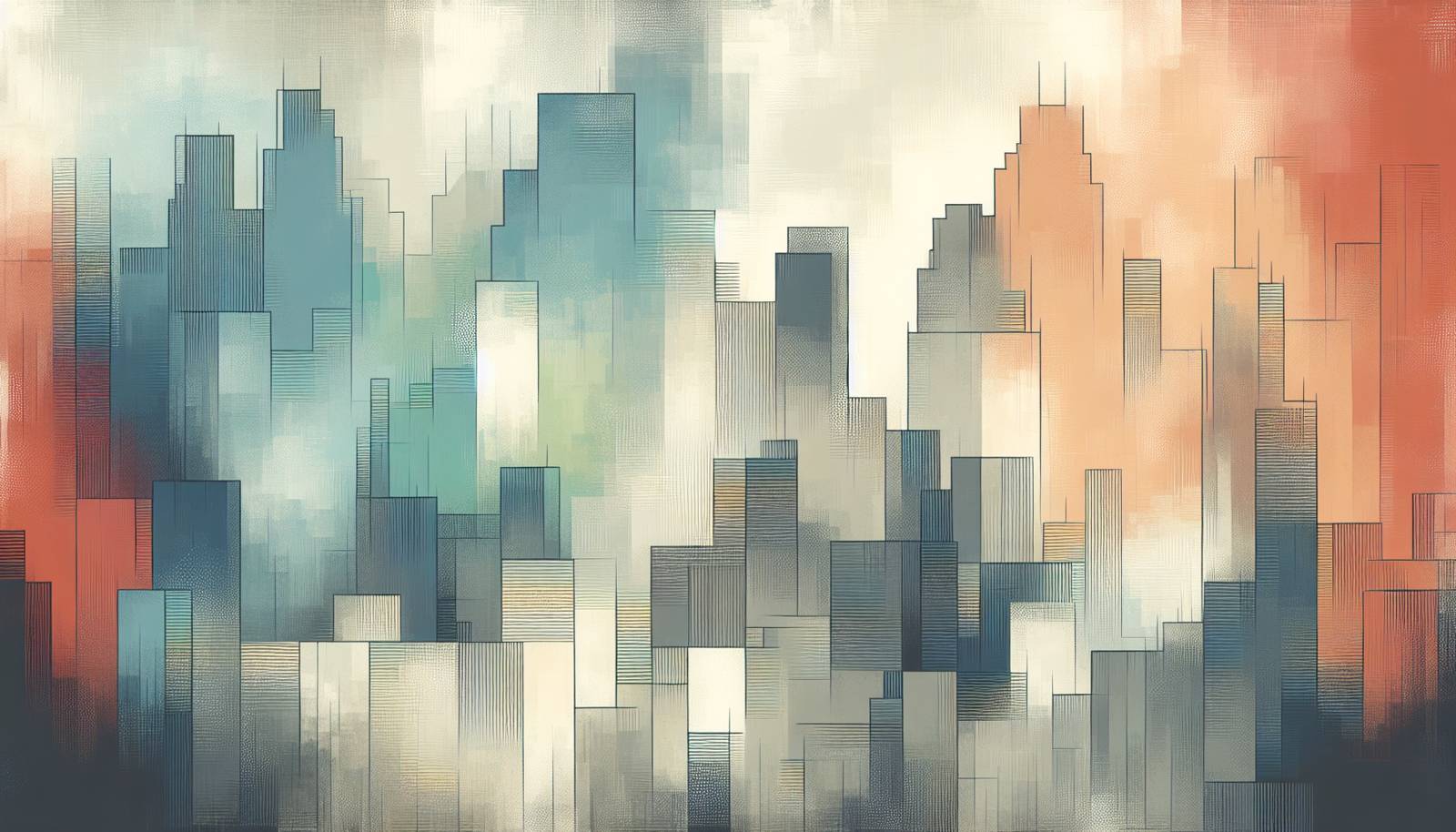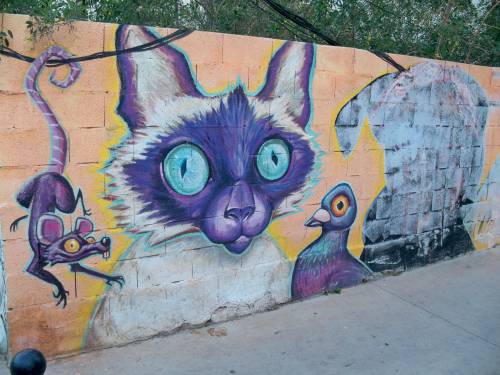
FAQ About The Role of Graffiti Murals in Urban Regeneration

What is the role of graffiti murals in urban regeneration?
Graffiti murals play a significant role in urban regeneration by transforming neglected and underutilized spaces into vibrant areas that attract visitors and enhance community morale. They can improve the visual aesthetics and perception of an area, thereby encouraging economic development and investment. Graffiti murals often become cultural landmarks, fostering a sense of identity and pride among residents.

How do graffiti murals contribute to cultural identity?
Graffiti murals contribute to cultural identity by reflecting the distinctive history, stories, and values of a community through art. They often incorporate local themes, symbols, and traditions, which help to preserve and promote the unique culture of a place. Artists often engage with community members to ensure their work resonates on a local level, enhancing cultural pride and social cohesion.

In what ways can graffiti murals enhance local engagement?
Graffiti murals enhance local engagement by involving community members in the creative process, from planning and design to implementation. These projects often provide platforms for local artists and encourage public participation, fostering a sense of ownership and pride in the outcomes. Moreover, murals can stimulate dialogue and interaction among residents, thus strengthening community bonds.

Can graffiti murals help in community revitalization efforts?
Yes, graffiti murals can significantly aid community revitalization efforts by improving the aesthetic appeal of urban areas and attracting visitors and tourists. They can turn previously unattractive spaces into community assets, stimulate local economies by drawing in businesses and tourists, and transform perceptions about a neighborhood's vitality and potential.

What are some examples of graffiti murals transforming urban spaces?
Many cities around the world have experienced transformation through graffiti murals. For instance, Wynwood Walls in Miami, Florida, has turned a once-blighted warehouse district into a vibrant outdoor museum attracting millions of visitors annually. Another example is the East Side Gallery in Berlin, which transformed a portion of the Berlin Wall into a world-famous art installation that celebrates freedom and creativity.

How does the presence of graffiti murals impact property values in urban areas?
The presence of graffiti murals can positively impact property values in urban areas by enhancing the neighborhood's appeal and attracting new businesses and residents. Vibrant public art projects can signal to potential buyers and investors that a community is dynamic and on the rise. However, this effect can vary depending on the quality and management of the projects.

What role do graffiti artists play in urban transformation?
Graffiti artists play a crucial role in urban transformation by creating artworks that reimagine and redefine public spaces. They bring creativity and boldness to projects, helping to change perceptions and attitudes towards neglected areas. Artists often collaborate with local authorities and communities to ensure their work contributes positively to urban regeneration efforts.

Are there any challenges associated with using graffiti murals in urban regeneration?
Challenges associated with using graffiti murals in urban regeneration include potential issues of vandalism, differing public perceptions about graffiti's legitimacy, and maintaining the quality and meaning of the artwork over time. It can also be challenging to ensure that such projects are inclusive and representative of the local community's diversity.

How do councils and city planners typically support graffiti mural initiatives?
Councils and city planners typically support graffiti mural initiatives by providing funding, resources, and approvals necessary for projects. They may facilitate partnerships between artists, community groups, and local businesses to plan and execute murals. Additionally, they often promote public art programs that support graffiti as a tool for engagement and regeneration.

What is the difference between illegal graffiti and commissioned graffiti murals?
Illegal graffiti is done without permission on public or private property and is often considered vandalism, which can negatively impact an area. Commissioned graffiti murals, on the other hand, are officially sanctioned and funded artworks, often part of broader urban beautification projects aimed at enhancing the community and fostering local identity.

Can graffiti murals lead to gentrification?
Graffiti murals can sometimes be a catalyst for gentrification, as they enhance the attractiveness of neighborhoods and can increase property values, leading to a rise in the cost of living and displacement of long-term, lower-income residents. It is important for urban planners to balance the benefits of such public art projects with measures to ensure inclusivity and affordability.

What materials do artists use to create graffiti murals?
Artists typically use spray paint, acrylics, brushes, and stencils to create graffiti murals. The choice of materials depends on the desired style, the durability required for the mural, and the surface being painted. Some projects also incorporate mixed media elements, such as paper or found objects, for added texture and depth.

Why are graffiti murals considered a form of public art?
Graffiti murals are considered a form of public art because they are created in public spaces with the intention of being accessible to all. They engage with the community by reflecting local themes and issues, making art that is not just for private consumption but a visual dialogue with the neighborhood and its inhabitants.

How do graffiti murals influence tourism in urban areas?
Graffiti murals can significantly influence tourism by turning local areas into attractions drawing art lovers and tourists. Cities known for striking murals, like Philadelphia with its Mural Arts Program, attract visitors keen to explore these art displays, often leading to economic benefits for local businesses and increased international visibility.

What is the historical context of graffiti being used for urban regeneration?
The historical use of graffiti in urban regeneration can be traced to movements advocating for street art as a form of community expression and empowerment. Cities like New York in the 1970s and 1980s saw the potential of using murals to combat urban blight and build community pride, laying the groundwork for today's regeneration projects.

How might graffiti murals affect social dynamics in a city?
Graffiti murals can affect social dynamics by altering perceptions of neighborhoods and bridging differences among diverse community groups. These artworks often foster conversation and challenge social norms, potentially stimulating social change and encouraging interactions across demographic divides.

Are there environmental considerations in the creation of graffiti murals?
Environmental considerations in creating graffiti murals include the potential impact of aerosols used in spray paints, which can contribute to air pollution. To mitigate this, artists and organizers may use eco-friendly paints and materials, and ensure proper waste management during and after the mural's creation.

How do graffiti murals symbolize resistance or activism?
Graffiti murals often symbolize resistance or activism by providing a platform for marginalized voices and addressing social, political, and economic issues. These artworks can challenge authority, highlight injustices, and provoke thought, serving as powerful tools for grassroots movements and public discourse.

Can graffiti murals have educational purposes?
Yes, graffiti murals can have educational purposes by highlighting historical events, cultural stories, or social issues. They can serve as visual lessons that engage the public, incite curiosity, and encourage learning. Educational programs often accompany mural projects, bringing in schools and community groups to learn about art and its context.

What is the future potential for graffiti murals in urban development?
The future potential for graffiti murals in urban development is vast, as they continue to be recognized as effective tools for beautification, revitalization, and social engagement. With the rise of digital platforms and augmented reality, murals are increasingly interactive, offering dynamic experiences and greater audience participation. Continued collaboration between artists, planners, and communities will likely expand their role in sustainable urban development.
